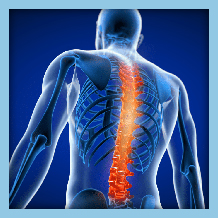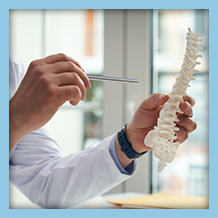

Adjacent segment disease may be asymptomatic or cause mild to debilitating pain. The severity will depend on how much space remains between the vertebrae above and below the diseased segment. If there is not enough space for natural spine motion, it could lead to further spinal degeneration and possible arthritis in the future. An adjacent segment disc disease can also increase stress levels on both segments and make them more susceptible to future problems if not treated appropriately.
What Are the Symptoms of Adjacent Segment Disease?
Some patients report severe neck pain; others notice tingling in their arms and hands. Many people experience leg pain, particularly when getting up from sitting or lying down.
While the exact cause of adjacent segment disease isn’t known, researchers believe it could occur due to several factors. For example, the stress placed on the spine during spinal fusion surgery may increase the likelihood of adjacent segment problems. Another potential explanation involves how the body responds to the foreign material used to fuse the spine. In addition, changes in the blood flow and pressure within the disc space may lead to damage over time.
Are There Specific Risk Factors for Adjacent Segment Disease?
Knowing the risk factors for adjacent segment disease is essential because it can help guide preoperative discussions with your surgeon to understand how these factors apply to you.
Researchers have found that older patients are more likely to develop ASD than younger patients. They also noted that having a degenerative spine disorder before undergoing spinal surgery increases the likelihood that ASD will occur. Additionally, multi-level fusions increase the risk of ASD. Lastly, being female is associated with increased rates of ASD.
Diagnosing Adjacent Segment Disease
If your doctor can trace those kinds of pain to the movement segments above or beneath your surgical site, you may have adjacent segment disease (ASD). Your surgeon may recommend imaging tests such as X-rays, CT scans, or MRIs. These images will help determine whether there is a problem with your fusion device or the bone graft material used during the operation.
Treatment for Adjacent Segment Disease
The good news is that milder forms of ASD that don’t cause spinal instability, pain or neurological issues can usually be managed conservatively without surgery. For example, physical therapy can help improve body mechanics. Medications and spinal injections may provide temporary relief.
Severe cases of ASD that compromise the stability of the spine or nerve function may require surgery. In most cases, this will be another spinal fusion.
However, devices such as artificial discs now allow motion in the injured or diseased segment. These devices are approved for use in the cervical and lumbar regions of the spine and can be used as a stand-alone procedure or in conjunction with arthrodesis.
Does ASD Cause Pain?
While degenerative spinal changes associated with ASD do show up on X-rays, they do not necessarily lead to pain. And while it’s true that some people with adjacent segment disease have pain, it’s important to note that many others don’t. Some patients report no symptoms whatsoever. However, if you are experiencing pain, your healthcare provider may refer you to a specialist for further evaluation.
What Can Patients Do to Prevent It?
Weight loss is one of the most important things you can do to reduce the risk of developing adjacent segment disease. Obesity increases the load placed on the spine, which leads to accelerated degeneration throughout the spine. Additionally, obesity puts additional pressure on the discs located above and below the affected level, causing further deterioration.
Smoking and vaping are both known to accelerate disc degeneration. If you are an active smoker or vaper, you should consider quitting to minimize the risks associated with adjacent segment disease.
Unfortunately, patients with healthy BMIs who do not smoke can also be diagnosed with adjacent segment disc disease. While maintaining a healthy weight and avoiding smoking can help, it cannot always prevent it.
Schedule a Consultation Today
Adjacent segment disease is a severe problem that can lead to limited pain-free movement or even chronic pain, making daily activities such as sleeping and walking difficult. It can also cause other symptoms, including numbness in the hands and neck.
As an active part of your spine, disc disruption can damage your quality of life and your ability to function independently. Contact us at Orthopedic & Laser Spine Surgery if you suspect possible adjacent segment disease. You can schedule an appointment through our contact form or call our office at (855) 853-6542.
